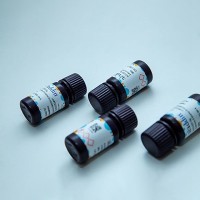Since the first descriptions of electrophoresis in small diameter tubes in the 1970s and 1980s (1
,2
), capillary electrophoresis (CE) has been recognized for its potential to replace slab-gel electrophoresis for the analysis
of nucleic acids (3
,4
). In particular, the availability of commercial instrumentation for CE over the last several years has made both the size
determination and quantitation of DNA restriction fragments or polymerase chain reaction (PCR) products amenable to automation.
Due to the same charge-to-mass ratio, the electrophoretic mobility of nucleic acid molecules in free solution is largely independent
of their molecular size (5
). Therefore, a sieving medium is required for the electrophoretic analysis of DNA fragments based on their size. Typically,
two different principal types of separation matrix are used. The first type of matrix is of high viscosity polymer (e.g.,
polyacrylamide) with a well-defined crosslinked gel in regard to the structure and size of its pores. The second type of matrix
is a noncrosslinked linear polymer network of materials such as, linear polyacrylamide, agarose, cellulose, dextran, poly(ethylene
oxide), with lower viscosity than the former type and with a more dynamic pore structure. Although the first type of matrix
is attached covalently to the capillary wall and may provide better separation for small (sequencing) fragments, the second
matrix format has the advantage of being able to be replenished after each electrophoretic cycle. This typically extends the
lifetime of a capillary, prevents contamination of the system, avoids sample carryover and allows the use of temperatures
well above room temperature. Most matrices used in both systems are tolerant to the addition of DNA denaturants. Many different
media useful for the separation of DNA have now become commercially available (6
).






